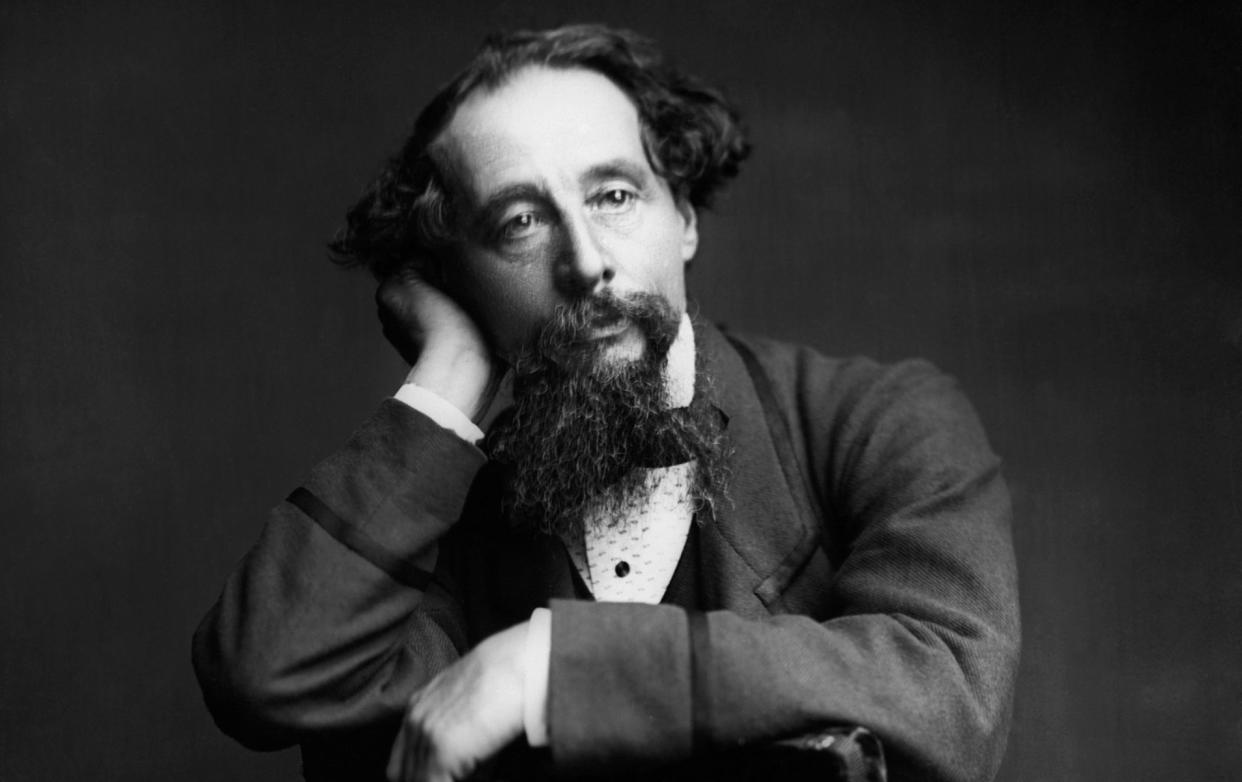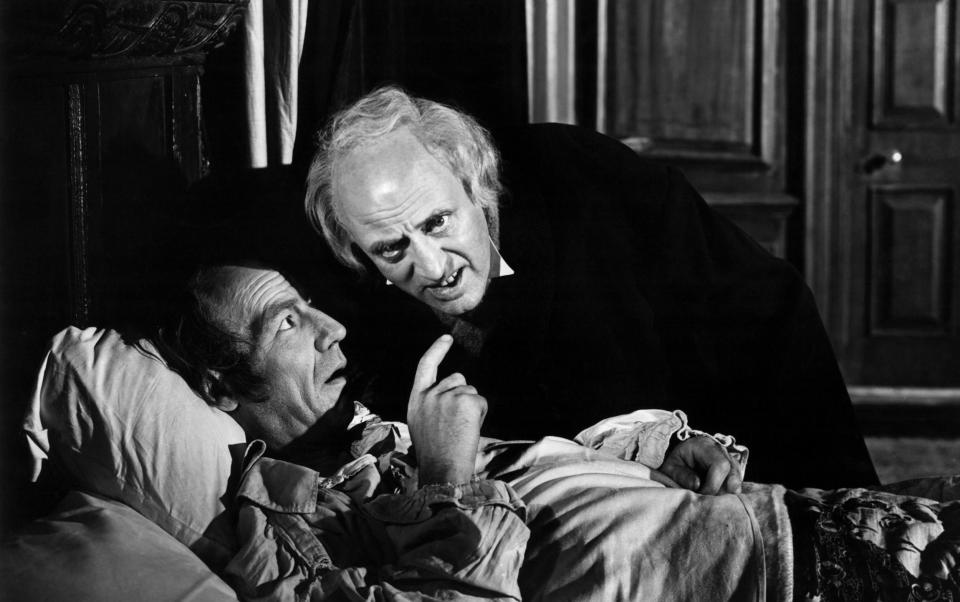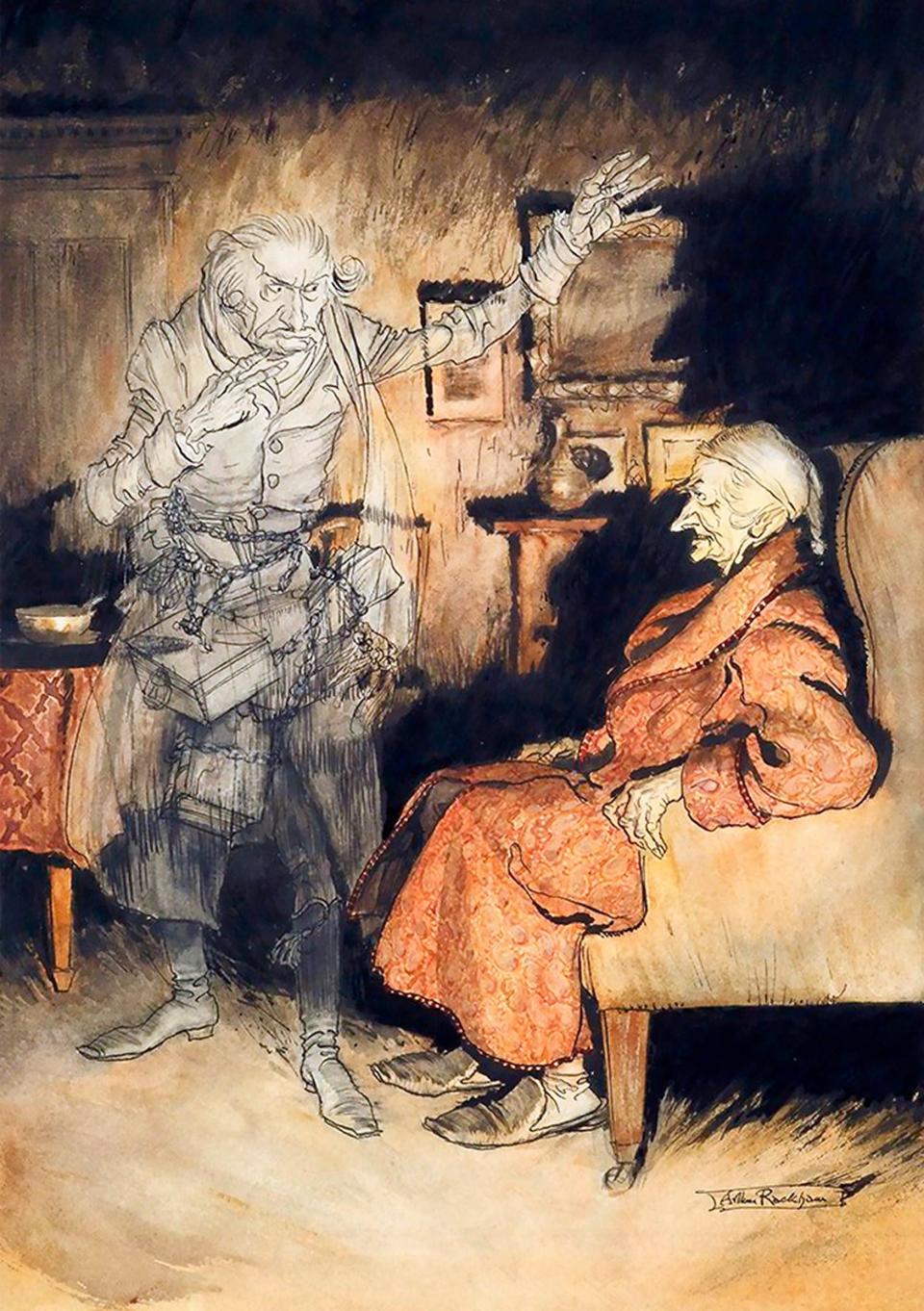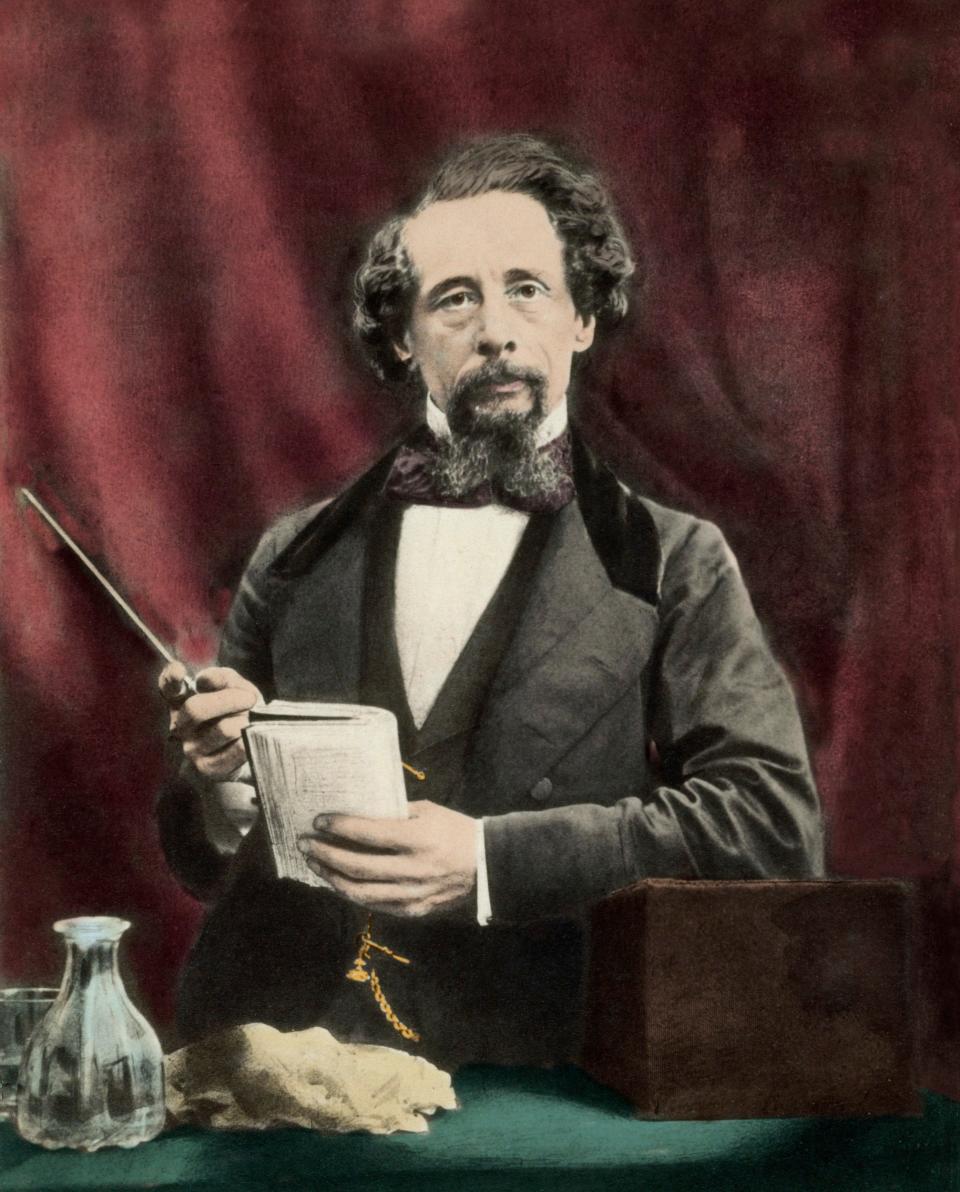Why ‘wicked’ Charles Dickens was the real Scrooge of Christmas

One hundred and eighty years ago this week, Charles Dickens published A Christmas Carol – and, with that one book, he was forever confirmed as the loving heart and soul of Victorian England.
The book rescued Dickens at a crucial moment. His latest sales were down 80 per cent, he was in debt, and rumours circulated he had lost his magic touch. He had to think of something. And so, during a frenzied week in October 1843, he walked the streets of London throughout the night, as he did when he couldn’t sleep, hammering out a story that would put him back at the top.
He came up with the idea of the wicked miser, Scrooge, his gentle clerk, Bob Cratchit, with his lovable family – Tiny Tim! – and, best of all, the ghosts that visit Scrooge and redeem him. In six impatient, heady weeks, he dashed off A Christmas Carol. Crackling with Christmas merriment, the first edition sold out in five days, it went through 11 editions in the next year alone, and it has never been out of print since. Our first modern celebrity, our first national treasure, was born.
Victorian readers relished the warmth and love, the sentimentality and the campaigning spirit of A Christmas Carol, never doubting these qualities were precisely those of its writer, who managed his public image brilliantly. He raised money for new schools, hospitals and good causes. He founded a home for prostitutes, interviewing every inmate himself, and personally expelling those who proved unworthy.
Victorian readers could never have imagined that in the comic book wickedness of Scrooge, Dickens was in fact partly depicting himself.

But Charles Dickens had a dark side, and was tormented by grudges. He never forgave his parents for taking him out of school to work in a factory when he was 12; he never forgave his first love, Maria Beadnell, for jilting him; and he never forgave his wife for not being her own sister, Mary, a teenage girl with whom he was secretly infatuated.
Few saw the savagery with which Dickens exiled his wife after she had borne him 10 children, or the cunning skill with which he manipulated a teenage actress, Ellen Ternan, until she became his mistress, or the bitter frustration he felt for the failures of his own sons.
Those who knew Dickens intimately, however, might have noticed fragments of the writer within his villains, through which he explored his worst impulses: the malevolent but comically hyper-active Quilp in The Old Curiosity Shop; the manipulative and murderous John Jasper in The Mystery of Edwin Drood; and even the “clutching, covetous old sinner”, Scrooge, in the most famous of all his tales, A Christmas Carol.

The Ghost of Christmas Past takes Scrooge back to his childhood. It is the last day of term, and boys are pouring merrily from their school. However, there remains “a lonely boy, reading near a feeble fire.” Scrooge sits unseen upon a bench and weeps “to see his poor forgotten self as he had used to be.” The child takes refuge in the stories of The Arabian Nights, until, to his great joy, his beloved sister, Fanny, comes to rescue him.
But Dickens is not describing the childhood of Scrooge here, he is describing his own. Sensitive, bookish, neglected by his parents, loved only by his sister Fanny, the young Scrooge is in fact identical to the young Dickens – even his sister’s name is the same. This is just one of countless tales where, in the strangest act of emotional abduction, Dickens the man re-fathers Dickens the child, lavishing belated love and compassion on an image of his former self.
Like the older Scrooge, Dickens could also be “hard and sharp as flint”. He was good at not forgiving. When he tired of his wife, he forced her brutally from the family home, refused to allow eight of their nine children to live with her, prohibited her from their weddings, and did not trouble to inform her when one of their children died. And, like Scrooge, he could be cruelly dismissive of those who failed to make their own way. Scrooge curtly observes that the poor and the weak had better die “and decrease the surplus population”; similarly, when Dickens tired of the failures and debts of his most unsuccessful son, he wrote with breathtaking brutality: “I begin to wish that he were honestly dead.”
Dickens allowed the unreconstructed Scrooge to hint at faults within the character of his creator, faults that took on ever greater substance as he grew older. Scrooge is “glad to hear” the treadmill is still in use in prisons – but Dickens himself became a great proponent of treadmills in later life. And not just treadmills – flogging, too. In a piece for his hugely popular weekly magazine, All The Year Round, he wrote with an excited brutality of his suggested punishment for the violent “ruffian” type then plaguing London: “I would have his back scarified often and deep.”

And, like Scrooge again, terrified of the poverty that afflicted his youth, he cared far too much about money: even in his will he could not stop himself complaining that all the expenses of his children had fallen on him. His reading tours at home and in America brought him both adulation and money – and he loved both. And yet these lucratitve readings were the cause of his premature death aged just 58, after he insisted on including a scene from Oliver Twist: the murder of Nancy by Bill Sikes. He performed it with a wild, debilitating energy, as though he held the real cudgel in his hand and was killing anew his own creature. It was a fabulous success, guaranteeing huge ticket sales – but it shattered him. Once again, the mask had slipped.
In 1860 he wrote an essay describing the way that in Paris he is “dragged by invisible forces into the Morgue. I never want to go there, but I am always pulled there.” He stares fascinated at the corpse of an “old grey man” with a tap dripping on his face. What day of the year did he reserve for this special outing? Why, Christmas Day of course!


